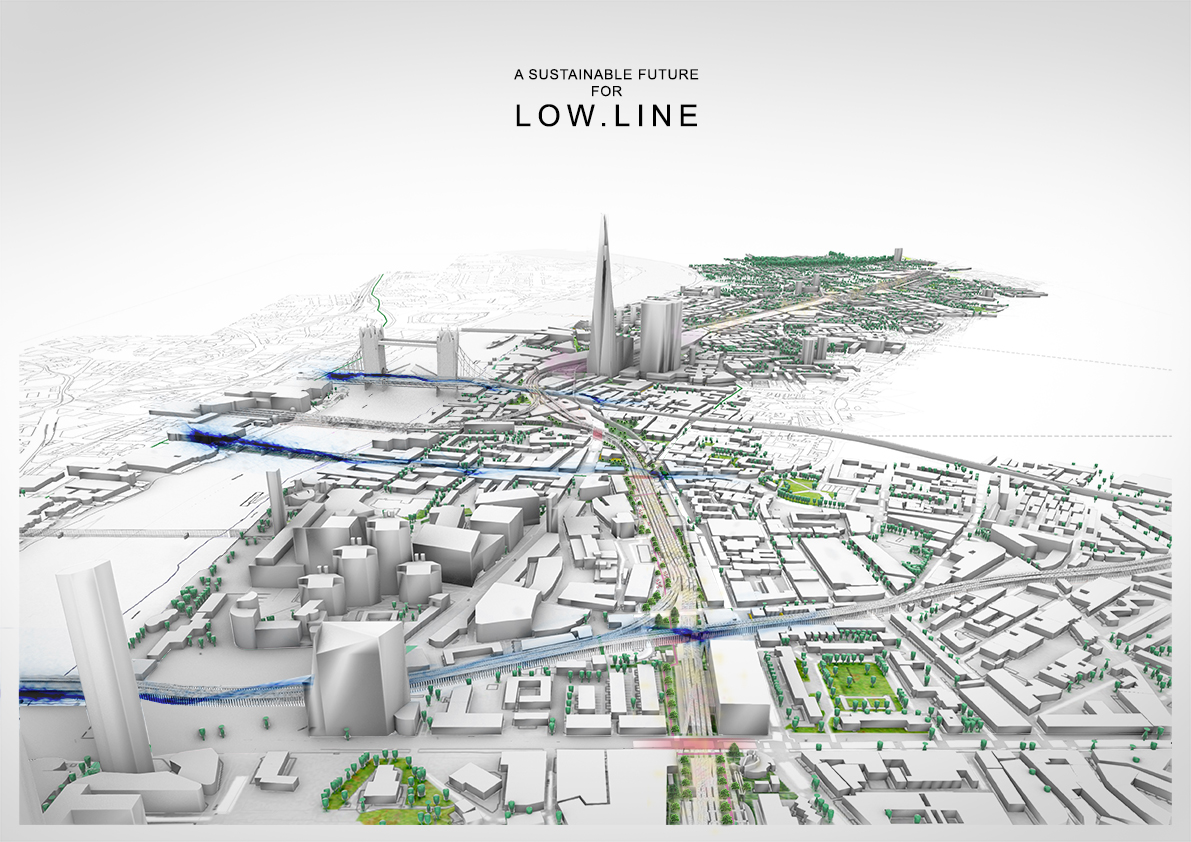Description
With the idea of Low Line in Central London, we identified the opportunity to enact an ambitious vision: a unique, multifunctional, and highly recognizable urban corridor that benefits both human and nature while maintaining the identity of existing heritage and community.
By studying the environmental changes extended in London and Southwark, we believe that a viable design solution to these concerns must be an interface between hydrology, ecology, recreation, and communities.
In this way, we came up with a typology of eight design opportunities linked by an urban trail to build a vision of how to reclaim the industrial viaducts for the public and nature, and spark growth and development for the district.
ECOLOGY – A LINE THAT RESTORES AN URBAN NATURE
In this proposal, one of the initiatives is to improve biodiversity, and provide a stronger urban ecological role to the city.
The idea of living wall and carbon grass will reclaim this long-overlooked civic asset, and rebuild better habitats for wildlife. Shaded by the climbers planted along the viaduct, people will gain a green respite in this dense urban environment. And simple changes, such as carbon grass, will also improve microclimate, and re-imagine a low-carbon future for London.
HYDROLOGY – A LINE THAT REINTRODUCES THE NATURAL WATER CYCLE
Swale, proposed along the urban trail will catch and redirect rainwater coming from the road and pathway to irrigate plants, and eventually seepage into the ground, to contribute sustainable drainage, and meanwhile prevent overloads within the existing drainage infrastructure.
Rainwater will also be captured by the proposed canopies. When the sun is shining, people can find shade underneath the canopy, and enjoy the linear garden that surrounds it. But on wet days, rainwater will drain down through the structure and get diverted into the surrounding green spaces to provide passive irrigation.
RECREATION – A LINE THAT PROVIDES A BREATH TO THE BUSTLING CITY
The design features a walking and jogging urban trail with spots of multi-use play structures.
People who arrive at Low Line, either local residents, tourists, or people working nearby will experience the benefits of this welcome corridor, and gain a safe and healthy space for their daily exercise.
Connected by the trail, the identifiable play structure will also offer a range of activities for all ages, and thus create a vibrant destination for active living and recreation.
COMMUNITY – A LINE THAT CREATES EXCHANGES AMONG NEIGHBORHOODS
This design is also an opportunity to transform an underappreciated but potential area into a special community space for this ever-growing city.
The idea of movable furniture is intended to provide modular seats and tables that can be moved and grouped freely to provide spaces for group discussion, friend chatting, and other events. So, people will be able to find their ways to activate the space than those we have already planned.
Similarly, urban farming is another idea that will foster positive community engagement, augment the space for social interaction, and encourage residents to participate in ecological restoration.
Images






